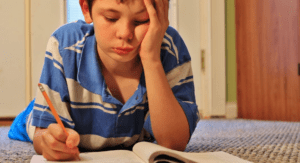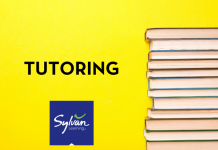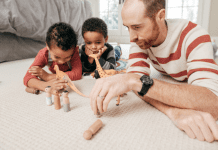Starting a new school year can be stressful and full of surprises – for both parents and kids. When all goes well, children get into their rhythm fairly quickly and step up to new learning and academic demands and expectations. For some children, however, learning may not come so easily. According to the American Academy of Family Practice, 7 to 10% of kids may have a learning disability. How do you know if you need to be concerned about your child? We talked with board-certified family medicine physician, Heather Grisham, DO, of College Park Family Care Center to help us better understand the signs of learning disorders and what to do if your child shows them.
 Breaking down learning disabilities
Breaking down learning disabilities
A learning disability is an abnormality in how the brain processes information, or how a person takes in and uses information, says Dr. Grisham. There are many different types of learning disabilities that may impact your child’s ability to read, write, speak or reason. The most common types include:
- Reading Disorder or Dyslexia: Children may have trouble understanding their letters and how they sound, how letters make up words, spelling, and comprehending what they read. Dyslexia can also cause a child to have a hard time expressing himself or herself.
- Writing Disorder or Dysgraphia: A child with a writing disorder has a hard time using a pen or pencil, and is often unable to hold it properly. He or she may have trouble remembering how letters are formed and even conveying their thoughts on paper.
- Math Disorder or Dyscalculia: Little ones may struggle to count and recognize their numbers, while older children have trouble solving basic math problems and later mastering fractions, percentages, geometry and algebra concepts.
- Other types of learning disabilities include:
- Speech and language delays in younger kids who may have trouble following directions or answering questions.
- Auditory Processing, which is not a hearing issue. The child may have trouble learning to read, distinguishing specific sounds from background noise or struggling with words which sound alike.
- Visual Processing problems often cause hand-eye coordination struggles, trouble reading or telling two similar-looking objects apart.
What about ADHD (attention deficit hyperactivity disorder)?
Although kids with ADHD may have some of the same signs as a learning disorder – trouble focusing, remembering assignments, completing homework, etc. – ADHD is not a learning disorder.
“ADHD is often linked with learning disabilities, but by itself, is not one,” explains Dr. Grisham. “A child can have ADHD without a learning disability because the child may have the ability to process information well, but may not have the focus to take in the information. If ADHD is not managed well, it can lead to difficulty learning. With behavioral techniques and medication, if appropriate for the child, his or her ability to focus can be improved.”
Seeing the Signs
Although there are multiple types of learning disabilities, there are some signs across all types. Kids with learning disabilities may struggle to keep up with their peers, without knowing why. Understandably, this may be frustrating for the child, so the first sign you may see that something is wrong may be related to mood or behavior.
“If a child is struggling with a learning disorder, frustration may cause him or her to have behavioral outbursts,” says Dr. Grisham. “If you notice some behavior issues, it’s important to make sure there is no processing problem, or learning disability that may be hindering your child from being able to complete a task or interaction well.”
Kids with learning disabilities often have difficulty with:
- Understanding and following directions
- Staying organized
- Staying focused and/or finishing schoolwork
- Learning facts and memorizing
- Reading, handwriting or math
- Expressing himself or herself
- Following abstract ideas
- Attention to detail
- Paying attention or listening in class
- Social skills
How early does a learning disability show itself?
The potential for learning disabilities can show up in very young children. Delays in walking, talking, socialization or other milestones may be a sign of future problems, so Dr. Grisham advises paying close attention to developmental guidelines.
“We recommend coming in for yearly well child checks, where we screen children for medical problems and developmental delays,” says Dr. Grisham. “Often when developmental delays are caught early, intervention can be started early. The earlier interventions can be started, the better the outcomes we see for children in helping them reach their full potential.”
In many cases, learning disabilities are diagnosed when children are a little older, often by those around them most – parents or teachers.
“Diagnosis really depends on the child and the specific learning disability. There are a variety of ways they can impact individual kids,” says Dr. Grisham. “We often see learning disabilities revealed in school because a child is facing new and more structured challenges than before.”
Lean on the experts
If you suspect your child may have a learning disability, one of your first stops should be your child’s doctor. He or she can look into signs of medical problems that can lead to trouble learning, such as hearing difficulties, oral problems, and screen for characteristics of autism or ADHD. If there is no medical problem, a referral to the school counselor for advice on an Individual Education Plan would be next, or possibly referral to speech pathologist, occupational therapist, or psychologist depending on the concern.
















